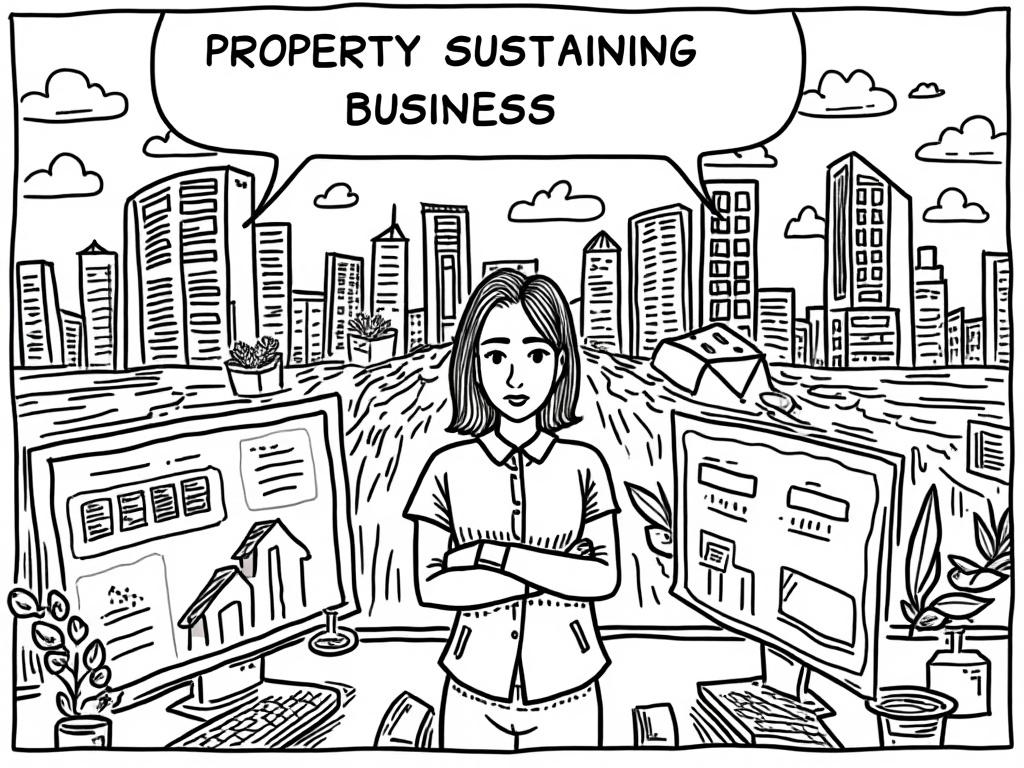
Sustainable and Eco-Friendly Properties in Greece: Your Guide to Green Living in the Mediterranean
Reading time: 8 minutes
Table of Contents
- Understanding Sustainable Property Investment in Greece
- Greek Green Building Certifications and Standards
- Essential Eco-Friendly Features to Look For
- Regional Opportunities: Where to Find the Best Sustainable Properties
- Financial Benefits and Incentives
- Common Challenges and Practical Solutions
- Your Sustainable Property Journey: Next Steps
- Frequently Asked Questions
Ever dreamed of owning a piece of paradise that doesn’t cost the earth—literally? Greece’s sustainable property market is experiencing unprecedented growth, offering eco-conscious investors a chance to combine Mediterranean living with environmental responsibility.
Here’s the straight talk: The Greek real estate market has evolved dramatically since 2019, with sustainable properties commanding 15-20% higher rental yields compared to conventional alternatives. But navigating this green revolution requires insider knowledge and strategic thinking.
Understanding Sustainable Property Investment in Greece
Greece’s commitment to achieving carbon neutrality by 2050 has transformed its property landscape. The country now offers some of Europe’s most innovative eco-friendly developments, from solar-powered villas in Crete to energy-efficient apartments in Athens’ revitalized neighborhoods.
What Makes a Property Truly Sustainable?
Sustainable properties in Greece go beyond basic energy efficiency. They incorporate:
- Renewable energy systems – Solar panels, wind turbines, and geothermal heating
- Water conservation technologies – Rainwater harvesting and greywater recycling
- Sustainable building materials – Local stone, recycled materials, and low-impact construction
- Smart home integration – IoT systems for optimized energy consumption
- Biophilic design elements – Green roofs, living walls, and natural ventilation systems
Market Reality Check
Quick scenario: Imagine you’re considering a traditional villa versus a certified sustainable property. The sustainable option might cost 8-12% more upfront, but here’s where it gets interesting—your operational costs drop by an average of 40% annually, and property values appreciate 25% faster than conventional properties.
According to the Hellenic Association of Real Estate Investment Companies, sustainable properties in prime Greek locations have shown remarkable resilience during economic fluctuations, maintaining occupancy rates above 85% even during challenging periods.
Greek Green Building Certifications and Standards
Understanding certification systems is crucial for making informed decisions. Greece recognizes several international and national standards:
| Certification | Focus Area | Investment Premium | Annual Savings | Market Recognition |
|---|---|---|---|---|
| LEED Gold/Platinum | Overall sustainability | 10-15% | 35-45% | Excellent |
| BREEAM Excellent | Environmental performance | 8-12% | 30-40% | Very Good |
| DGNB Gold | Holistic sustainability | 12-18% | 40-50% | Excellent |
| Greek Green Building Council | Local compliance | 5-8% | 25-35% | Good |
| Passive House Standard | Energy efficiency | 15-20% | 60-70% | Premium |
Essential Eco-Friendly Features to Look For
When evaluating property for sale in greece, certain features distinguish genuinely sustainable properties from greenwashed alternatives.
Energy Systems That Actually Work
Solar Integration Beyond Basic Panels: Look for properties with integrated photovoltaic systems, not just add-on panels. The best developments incorporate solar tiles that blend seamlessly with traditional Greek architecture while generating 20-30% more energy than conventional installations.
Smart Climate Control: Advanced properties feature zoned HVAC systems that adapt to occupancy patterns and weather conditions. These systems can reduce energy consumption by up to 45% compared to traditional air conditioning.
Water Management Innovation
Greece’s water scarcity challenges have sparked innovative solutions. Top-tier sustainable properties include:
- Atmospheric water generators that extract moisture from air
- Advanced filtration systems for saltwater conversion in coastal properties
- Permeable landscaping that reduces runoff by 60%
- Smart irrigation systems that use soil sensors and weather data
Energy Efficiency Comparison: Sustainable vs. Traditional Greek Properties
85% Self-Sufficient
70% Reduction
78% Lower Consumption
90% Reduction
65% Waste Diversion
Regional Opportunities: Where to Find the Best Sustainable Properties
Crete: The Sustainability Pioneer
Crete leads Greece’s sustainable property revolution. The island’s abundant sunshine and progressive local policies have created ideal conditions for eco-friendly developments. Case Study: The “Elounda Hills Green Resort” showcases how luxury and sustainability coexist—featuring 100% renewable energy, organic farming integration, and traditional Cretan architecture updated with modern efficiency standards.
Athens: Urban Sustainability Revolution
Athens’ transformation surprises many investors. The capital’s sustainable property sector focuses on adaptive reuse projects that preserve historical character while achieving modern efficiency standards. Properties in neighborhoods like Exarchia and Psirri offer excellent investment potential with 15-year payback periods for sustainable upgrades.
The Cyclades: Island Innovation
Islands like Mykonos and Santorini face unique sustainability challenges that have sparked innovative solutions. New developments must demonstrate water self-sufficiency and energy independence—requirements that initially seemed restrictive but now drive premium property values.
Financial Benefits and Incentives
Greece’s “Green Recovery Fund” provides substantial incentives for sustainable property investment:
Direct Financial Benefits:
- Up to 40% tax credits for certified sustainable improvements
- Reduced property transfer taxes (3% vs. standard 3.09%)
- Preferential mortgage rates (typically 0.5-1% below market rates)
- EU structural funding access for larger developments
Operational Advantages:
- Average utility cost reduction of 60-70%
- Premium rental rates 20-30% above conventional properties
- Higher occupancy rates (average 92% vs. 78% for traditional properties)
- Faster appreciation—sustainable properties appreciate 25-40% faster
Common Challenges and Practical Solutions
Challenge 1: Higher Initial Investment Costs
Reality: Sustainable properties typically cost 8-15% more upfront.
Strategic Solution: Focus on properties with 7-10 year payback periods. Look for developments that qualify for multiple incentive programs—these can effectively eliminate the initial premium while providing long-term benefits.
Challenge 2: Complex Certification Processes
Reality: Navigating Greek bureaucracy plus international certification requirements can be overwhelming.
Practical Approach: Partner with developers who have established certification track records. Companies like “Grivalia Properties” and “Lamda Development” have streamlined processes and proven results.
Challenge 3: Maintenance and Technology Updates
Reality: Sustainable technologies require specialized maintenance and periodic updates.
Smart Strategy: Choose properties with comprehensive maintenance contracts and technology upgrade clauses. This protects your investment while ensuring optimal performance.
Pro Tip: The right sustainable property isn’t just about avoiding environmental problems—it’s about creating resilient, future-proof investments that outperform traditional alternatives in every measurable category.
Your Sustainable Property Journey: Next Steps
Ready to transform environmental consciousness into profitable investment? Here’s your action-oriented roadmap:
Immediate Actions (Next 30 Days):
- Research Certification Requirements: Identify which green certifications align with your investment goals and budget constraints
- Connect with Specialized Agents: Find real estate professionals who understand sustainable property nuances and local incentive programs
- Calculate Total Cost of Ownership: Use comprehensive calculators that include energy savings, tax benefits, and appreciation potential
Strategic Planning (Next 90 Days):
- Site Visits and Due Diligence: Personally inspect properties, focusing on technology integration and build quality
- Financial Structure Optimization: Explore green mortgages and government incentive programs specific to your chosen region
- Professional Network Building: Establish relationships with sustainable property managers, renewable energy contractors, and local government contacts
The Greek sustainable property market represents more than an investment opportunity—it’s participation in a fundamental shift toward responsible development that benefits both investors and communities. As climate change reshapes global real estate patterns, early adopters in Greece’s green property sector are positioning themselves for decades of sustainable returns.
What aspect of sustainable property investment in Greece resonates most with your long-term vision—the environmental impact, financial returns, or lifestyle benefits? Your answer will guide your next steps toward Mediterranean sustainability success.
Frequently Asked Questions
What’s the average payback period for sustainable property investments in Greece?
Most sustainable properties in Greece achieve full payback within 7-12 years when combining energy savings, tax incentives, and premium rental rates. Properties with Passive House certification often see payback periods as short as 5-7 years due to dramatic operational cost reductions and premium market positioning.
Can foreign investors access Greek green building incentives?
Yes, most Greek sustainability incentives are available to all property owners regardless of nationality. EU citizens have access to additional funding streams, but non-EU investors can still benefit from tax credits, reduced transfer fees, and preferential mortgage rates. The key is working with advisors who understand cross-border compliance requirements.
How do sustainable properties perform during Greece’s peak tourist seasons?
Sustainable properties consistently outperform traditional alternatives during high season, with occupancy rates averaging 15-20% higher. Guests increasingly prioritize eco-friendly accommodations, with 73% of international travelers willing to pay premium rates for certified sustainable properties. The combination of lower operational costs and higher occupancy creates exceptional summer profitability.

Article reviewed by Amelie Dufour, Co-Living Space Innovator | Urban Millennial Housing Solutions, on June 6, 2025
